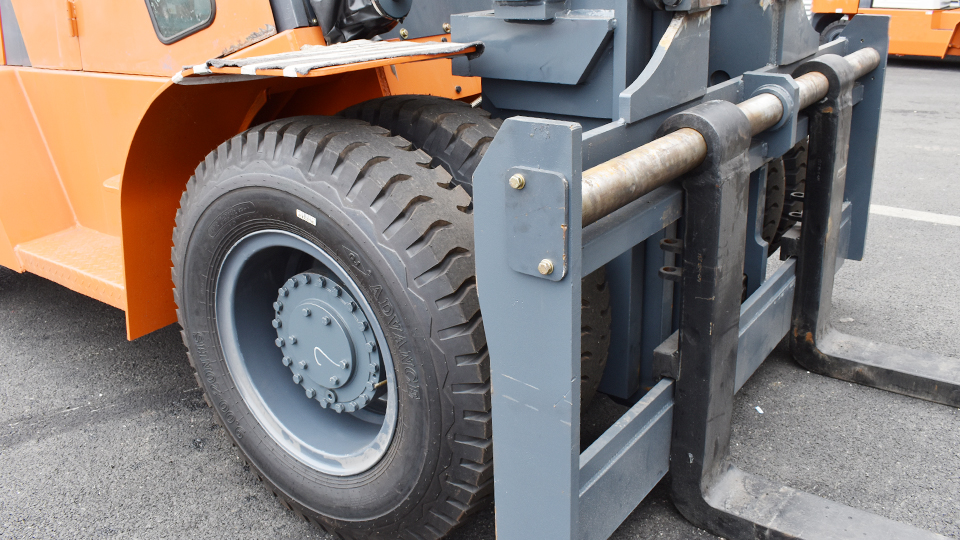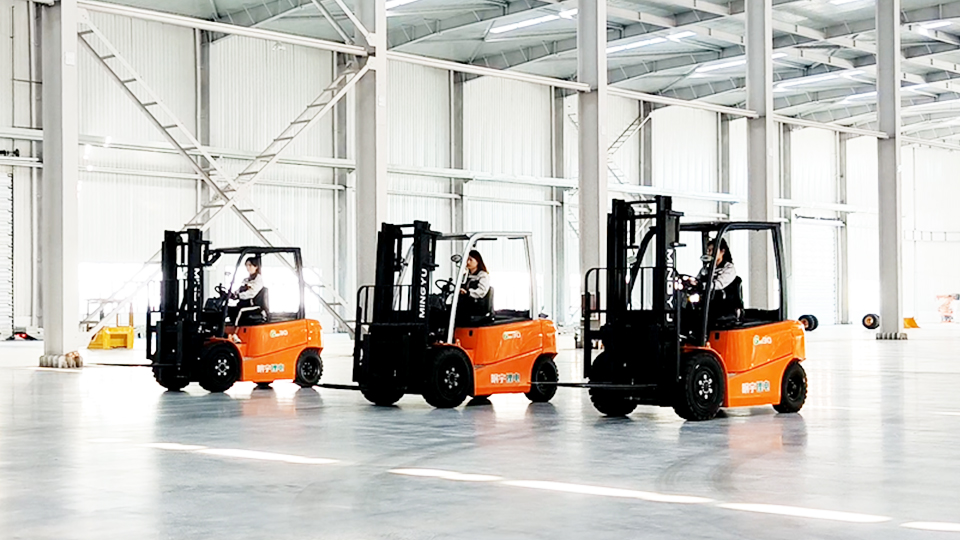
Search: Gather data on standard charging times for lead-acid and lithium-ion forklift batteries, factors affecting charging time (battery size, charger output, state of charge, temperature, technology), and best practices for extending battery life related to charging.
Structure: Outline the article with sections for an introduction, the dominant battery technologies (Lead-Acid vs. Lithium-Ion), the key determinants of charging time, a technical deep dive into the charging curve/profile, the role of the charger, and a conclusion/best practices summary.
Draft: Write a detailed technical article based on the gathered information.
Tool Code Generation
I need to search for technical specifications and factors related to forklift battery charging times.
The charging time for a forklift battery is not a fixed number; it is a complex variable determined primarily by the battery's chemistry, its capacity, and the power output of the charger.
For the two dominant battery technologies, the average total downtime required to return a battery to full service is:
|
Battery Technology |
Charging Time |
Post-Charge Cool-Down |
Total Downtime |
Charging Method |
|
Conventional Lead-Acid |
Approximately 8 hours |
Required (approx. 8 hours) |
$\approx 16$ hours |
Conventional (end-of-shift) |
|
Lithium-Ion (Li-ion) |
Approximately 1 to 4 hours |
None |
$1 - 4$ hours |
Opportunity or Conventional |
This difference in charging profile represents one of the most significant operational distinctions between the two technologies, directly impacting fleet efficiency and total equipment requirements in multi-shift operations.

Technical Analysis of Charging Time Determinants
The total time a forklift is non-operational for charging is a function of the electrochemical process and thermal management requirements of the battery type.
1. Battery Chemistry and Profile
A. Conventional Lead-Acid (Flooded/Wet Cell)
The lengthy charge time for lead-acid batteries is a necessity imposed by their internal chemical process.1
Charging Principle: Reversing the chemical reaction that occurs during discharge—converting lead sulfate back into lead and lead dioxide.
The 8-Hour Rule: The standard 8-hour charge time is based on an optimized current rate. Charging faster would lead to excessive heat generation, gas evolution (electrolysis of water into hydrogen and oxygen—a safety hazard requiring ventilation), and accelerated plate deterioration (sulfation and grid corrosion). This rate is typically 2$\mathbf{0.14C}$ to 3$\mathbf{0.20C}$ (14% to 20% of the battery's Amp-Hour (Ah) capacity).4 For a 1,000 Ah battery, this is a 140A to 200A charge rate.
The 8-Hour Cool-Down: A lead-acid battery generates a substantial amount of heat during the final stage of charging (the gassing or equalization phase).5 The subsequent 8-hour cool-down period is critical to prevent plate warpage and material shedding, which drastically shortens the battery's lifespan.6 The 7$\mathbf{8-8-8}$ model (8 hours use, 8 hours charge, 8 hours cool-down) dictates operational planning for this technology.8
B. Lithium-Ion (Li-ion) (e.g., LFP or NMC)
Li-ion batteries use intercalation chemistry, where lithium ions move between the cathode and anode during charging and discharging. This process is far more efficient and generates minimal heat.
Charging Principle: Li-ion cells have very low internal resistance, allowing them to safely accept a much higher current rate ($\mathbf{\sim 1.0C}$ or more) without the thermal runaway risks associated with fast-charging lead-acid cells.
Rapid Charging Time: A full charge (0% to 100% State of Charge, or SOC) can typically be achieved in 1 to 3 hours.9 Many systems target an $80\%$ SOC—the most productive range—which can often be reached in under 1 hour during an opportunity charge (e.g., a lunch break).
No Cool-Down: Because the Li-ion charging process is highly efficient and heat generation is managed by an integrated Battery Management System (BMS), a separate cooling period is unnecessary.10 The equipment can return to service immediately, enabling 11$24/7$ single-battery operations.12
C. Thin Plate Pure Lead (TPPL)
A specialized form of lead-acid, TPPL can accept charge more quickly than conventional flooded cells, bridging the gap between lead-acid and Li-ion.13 They support opportunity charging, often reaching full charge in 1.5 to 5 hours depending on the application and charger output.14
2. Technical Factors and Calculations
The actual time to charge a battery ($\mathbf{T_c}$) is fundamentally determined by the ratio of the battery's capacity ($\mathbf{C}$, in Amp-Hours, Ah) and the charger's output current ($\mathbf{I_c}$, in Amperes, A), adjusted for charging efficiency ($\mathbf{\eta}$).
$$\mathbf{T_c} \approx \frac{\mathbf{C}}{\mathbf{I_c}} \times \frac{1}{\mathbf{\eta}}$$
A. Battery Capacity ($C$ and $I_c$ Ratio)
Capacity (Ah): A larger battery capacity (higher Ah rating) requires a proportionally longer charge time for a given charger output.15
Charger Sizing (I_c): Charger output is specifically matched to the battery's nominal capacity.16
Conventional Lead-Acid: Chargers are typically sized to deliver $15\%$ to $17\%$ of the 6-hour Ah rating.
Fast/Opportunity Li-ion: Chargers can be sized to deliver $40\%$ to $100\%$ of the Ah rating, enabling significantly reduced charge times.
B. Charging Curve and Profile
The charging time is prolonged by the non-linear charging curve, especially in lead-acid batteries.
Bulk Charge (Constant Current, CC): The battery is charged at a fixed, high current until it reaches approximately $80\%$ SOC. This is the fastest part of the cycle.
Absorption Charge (Constant Voltage, CV): The voltage is held constant while the current tapers off. For lead-acid, this is the phase where gassing begins, and the rate must slow to prevent overheating and cell damage. This phase can take hours to fill the final $20\%$ of capacity.
Float/Equalization Charge (Lead-Acid Only): A low-rate, purposeful overcharge is periodically applied to mix the electrolyte (preventing acid stratification) and ensure all cells are chemically balanced, which can add 2 to 3 hours to the total cycle time. This is an essential life-extending maintenance step for lead-acid.17
C. Charging Efficiency ($\eta$)
The energy conversion efficiency varies greatly by technology:
Lead-Acid: Efficiency is around $\mathbf{70\% - 85\%}$. The remaining $15\%$ to $30\%$ of energy is converted into heat and gasses (wasted energy). This loss of efficiency is a major contributor to the lengthy charge and cool-down periods.
Lithium-Ion: Efficiency is much higher, often 18$\mathbf{95\% - 99\%}$.19 Minimal energy is wasted as heat, which allows for fast, continuous charging without thermal issues.
D. State of Discharge (SOD)
The recommended level of discharge before recharging significantly impacts the required charge time and battery longevity.20
Lead-Acid: Should be charged when they reach 21$20\%$ to 22$30\%$ remaining SOC (no more than 23$80\%$ discharge depth).24 Deep discharge below this level can accelerate sulfation, which increases internal resistance and slows future charging.25
Lithium-Ion: Can be charged at any time, typically without harm.26 Opportunity charging (keeping the SOC between $30\%$ and $90\%$) is the optimal operational strategy.
Impact of Charger Technology on Charge Time
The charger itself is an intelligent electronic system that manages the flow of power to optimize charging speed while protecting the battery.27
|
Charger Type |
Description |
Effect on Charge Time |
|
Conventional (SCR/Ferroresonant) |
Standard, older technology for lead-acid. Delivers a fixed charging profile. |
$\approx 8$ hours for charge + 8 hours cool-down. |
|
High-Frequency (Smart/Inverter) |
Modern chargers for all types. High efficiency, can vary output based on battery needs. |
Optimized, precise 8-hour charge for lead-acid. Essential for fast Li-ion charging. |
|
Fast Chargers |
High-amperage systems specifically for Li-ion and some TPPL batteries. Output is high ($\ge 40\%$ of Ah capacity). |
Enables full charge in 1-2 hours or $40\%$ to $80\%$ top-ups in $15-30$ minutes. |
Voltage Matching and Compatibility
A critical technical factor is the matching of charger output voltage and profile to the battery.28 Using an incompatible charger (e.g., a $48\text{V}$ charger on a $36\text{V}$ battery) will immediately destroy the battery or the charger. Modern high-frequency chargers use software to automatically detect battery specifications and adjust the current and voltage profiles—a process that is non-negotiable for safe and effective charging.29
Conclusion: Operational Implications
The time it takes to recharge a forklift battery is a direct reflection of the chosen energy technology and its intrinsic physical limitations and benefits.

The long 30$\approx 16$ hour total downtime of the conventional lead-acid battery necessitates a 31$\mathbf{3:1}$ battery-to-truck ratio for 32$24/7$ operations (one battery in use, one charging, one cooling).33
The $1-4$ hour total downtime and the opportunity-charging capability of the Lithium-Ion battery enable a $\mathbf{1:1}$ battery-to-truck ratio, offering transformative productivity gains, reduced labor for battery swapping and maintenance, and a far more predictable operational schedule.
Therefore, while lead-acid charging is a scheduled, lengthy overnight event, Li-ion charging is a rapid, flexible process integrated into normal operational breaks.34 The decision of which battery to use is not just about the cost, but about which charging timeframe aligns with the facility's required operational intensity.
Name: selena
Mobile:+86-13176910558
Tel:+86-0535-2090977
Whatsapp:8613181602336
Email:vip@mingyuforklift.com
Add:Xiaqiu Town, Laizhou, Yantai City, Shandong Province, China